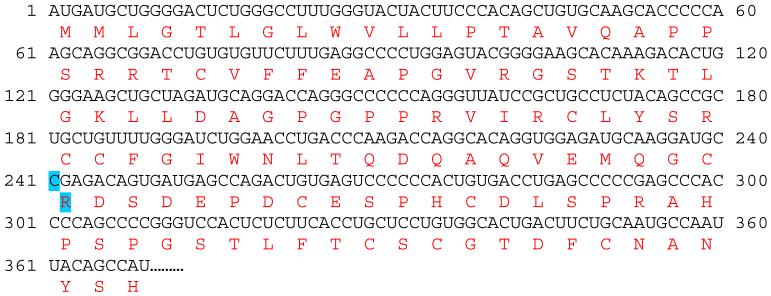Figure 7.
Predicted mRNA and amino acid sequence of canine MISRII, partial sequence showing the first 369 nucleotides of the predicted coding region (XM_543632, http://www.ncbi.nlm.nih.gov/entrez, http://bio.lundberg.gu.se/edu/translat.html). The highlighted single nucleotide change at position 241 (exon 3) and affected amino acid changes the codon at 81 from Arginine (R) to a premature stop codon (TGA). The resultant mRNA transcript would be 243 rather than 1806 bp, and might be unstable. Should the truncated transcript be translated, the resultant protein would consist of 80 rather than 602 amino acids, such that the extracellular domain would be disrupted and the entire transmembrane and intracellular signaling domains would be absent, resulting in a nonfunctional MISRII.

